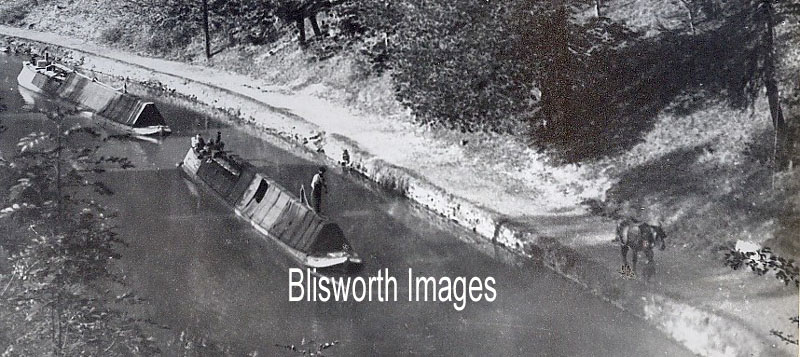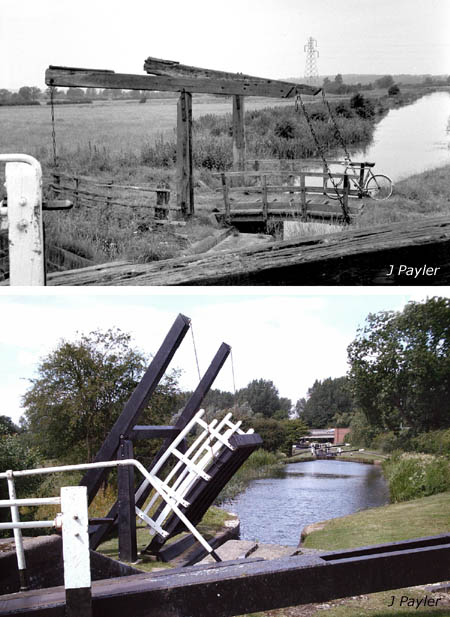|
Canal Part I , Blisworth, Northamptonshire, UK. All pictures are presented at relatively low resolution. There will be hundreds of pictures on this site - there is an economic limit to the webspace available. The point of this presentation is that you can see for yourself the extent of the collection and return later as the collection expands - as it surely will. Any interest in copies of a picture at a higher resolution (ie. clarity) should be directed through contacts given in the Blisworth "Round and About" parish council publication or using the comment form on the home page. In some cases the pictures are not available due to copyright restrictions. However, permission has been obtained, where possible, to include them here. Printed below each image is the photographer's name, if known. |
||
|
Link to the Northampton Branch of the Inland Waterways Association |
||
|
A Revised Story
of the Construction of Blisworth Tunnel
|
||
|
Back to INDEX page This is Part I Part II Part III |
||
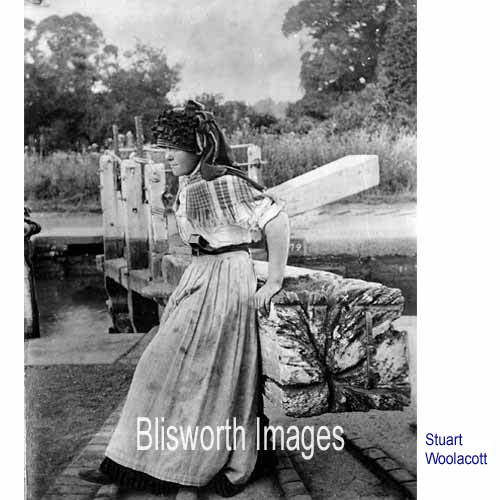 |
08-00 The girl is thought to be operating a lock gate in the flight at Stoke Bruerne. She is wearing traditional costume - date of the picture unknown but is likely to be after WW I. |
|
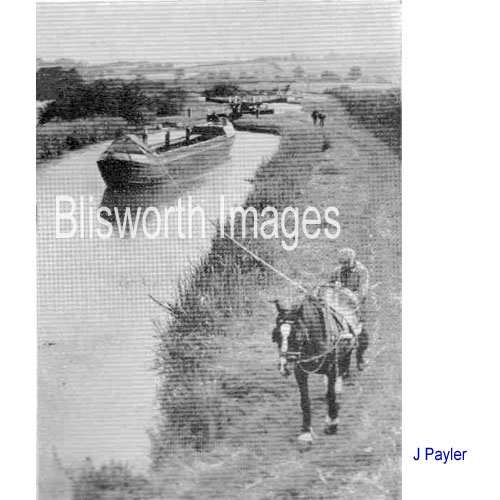 |
08-01 This is George Beechey between the 2nd and 3rd locks on the Northampton Arm. After coming off the boats he became lock keeper on the arm, living at the top lock. This location was one of a handful of locations on the waterways at that time still using a horse. It was to take the butties down the thick of Rothersthorpe, to save manual bow-hauling. The word "thick" is the jargon word for a tightly clustered group of locks. The Beecheys are an old canal boater family from the potteries area. |
|
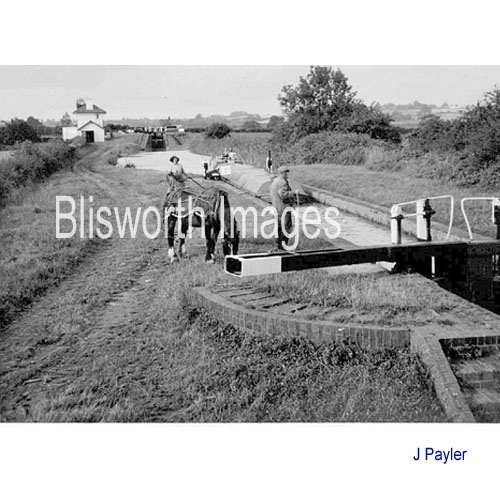 |
08-02 Northampton Arm near the Rothersthorpe road bridge. At Blisworth Arm, where the Northampton Arm starts, a map suggests where the horse rail wharf was located prior to the completion of the canal link to town.
|
|
|
|
||
|
|
This is the lift bridge, serving a right of way, over the Arm at one of
the locks. It is photographed in 1962 and in 2000 by J Payler,
whose photographs well adorn the various canal pages. It came to
our notice that the bridge is listed at the time of the routing of the
Blisworth Bypass in 1986. The new bypass runs parallel to the
Northampton Arm for some distance and was shifted in the planning phase
21 metres further away from the canal for reasons of amenity.
|
|
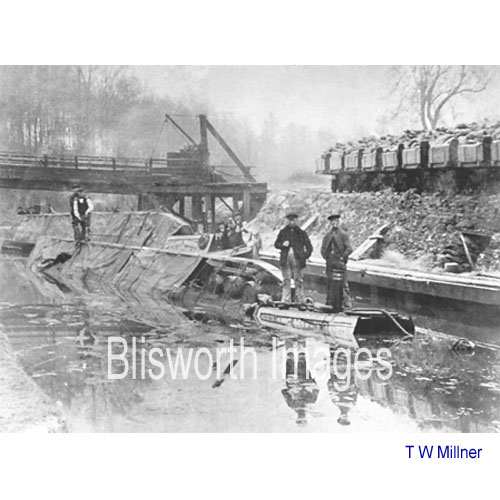 |
08-03
The aftermath of an incident in 1909. In D Blagrove's book "Two Centuries of Service" p.80, is a detailed account of the event - ".. the butty boat "Grange" collided with an empty ironstone boat moored at the landing ... the load shifted and caused the boat to capsize ..." See the same image in the Ironstone Bridge section. Note that the image is a relatively original one with the negative deposited at the NRO. Blagrove used the Waterways archive in Gloucester. |
|
|
Footnote: Richard Thomas is sure that the boat's name was Orange and not Grange. |
||
|
08-04 A photograph taken at around the same time, with the camera facing north. Presumably taken before the boat had capsized. Note that the chute device for unloading the limestone wagons into the boats is visible. The entire area is now densely over grown. Only a flat strip is discernable on which was once the rail track for the wagons.
|
||
| 08-05 A gang of canal workers, probably not at Blisworth. Notable are the fashioned heads of the wooden pilings - designed that way to avoid splitting when driven by a hammer. The date is uncertain but judged by photographic quality c. 1920 - 40. | ||
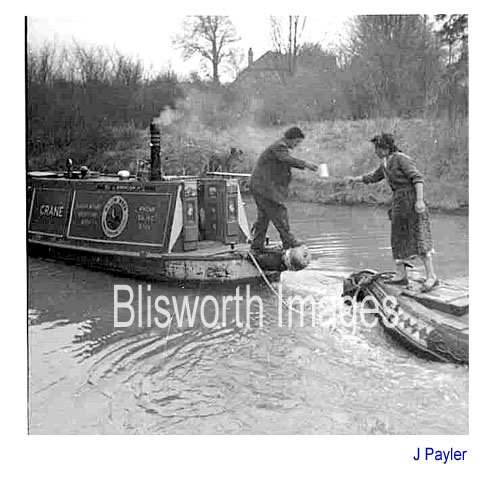 |
08-06 South of West Bridge, passing from "motor" to "butty" a billy-can of tea. | |
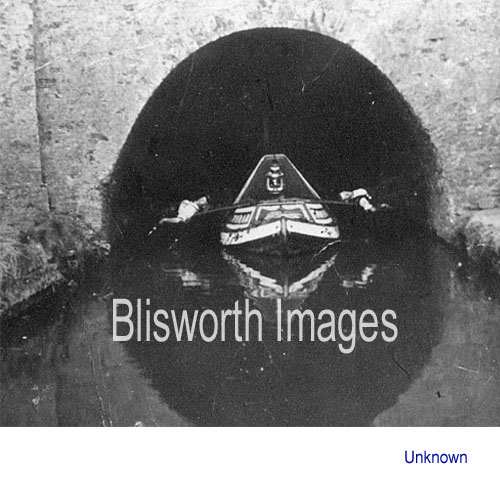 |
08-07 An archival picture of legging. This was probably a
staging c.
1900 for the camera. According to Lorna York, who worked the
wooden workboat "Sculptor" for a number of years, there is a
lady on the bank to the right who is Olive Stokes with her youngest son
Arthur. The two men who are legging are two other sons. The tunnel is
Crick Tunnel.
See the account of a recent re-enactment through Blisworth Tunnel. |
|
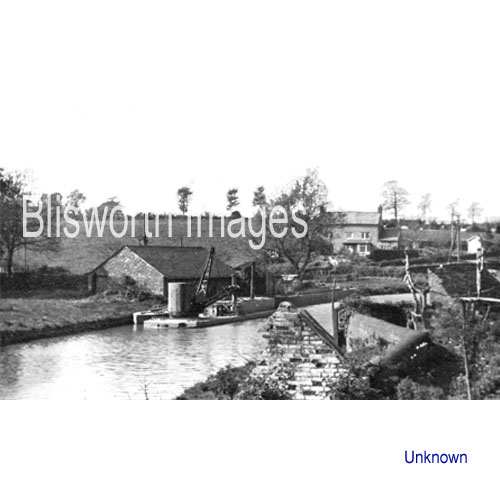 |
08-08 A steam dredger by the old piling yard and "Salt-house" at Blisworth. The gable in the foreground is the remains of a legger's shed. | |
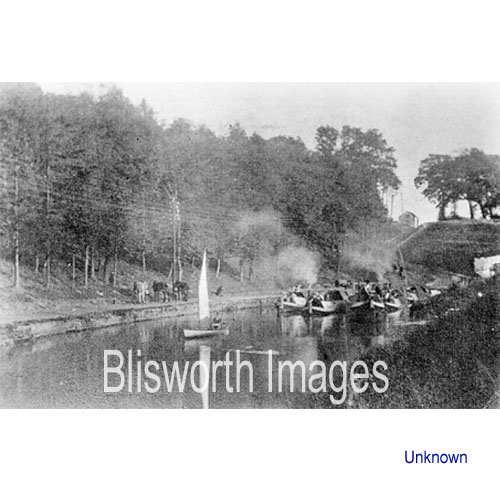 |
08-09 Dr Knott sailing on the canal. A few local people who could afford such things joined the sailing craze. Date uncertain but pre-1904. The collection of boats is waiting for the tug from Stoke Bruerne to tow them through the tunnel. Tugs were in continuous use from 26 April 1871, when the members of the Leggers Fraternity were pensioned off, to 30 Sept 1936. "On the horizon" at the top of an access path is a small hut used, it is thought, by the leggers and as a temporary stable. The hut was removed and replaced with one near to the tunnel mouth in c1904.
|
|
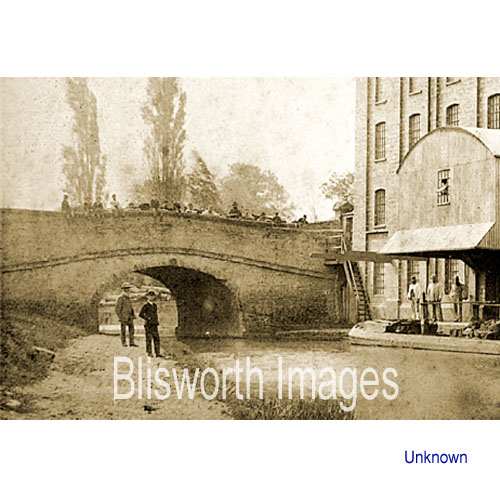 |
08-10 West bridge at Blisworth and Westley's corn mill. It is a mystery as to what the collection of spectators sitting on the bridge are waiting for. Note the timber waiting beside the wharf on the other side of the bridge. This is an early picture prior to the widening of the road over the bridge - compare with the next picture. | |
| 08-11 West Bridge pre-1934 (the year the chimney was removed). The form of the telegraph pole suggests 1905-25. | ||
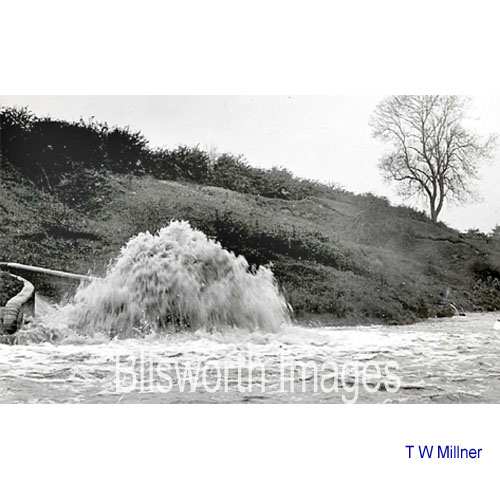 |
08-12 Picture taken by the canal Chief Engineer c. 1910 of the torrent of water that can be delivered by Fisher Brook. The little stream issuing from the bank, in the distance, was a spring favoured by boaters for topping up their reserves.
|
|
| 08-26 Fisher Brook issues at this sluice called "The Slit" - contemporary picture after the brickwork was re-built in 2001. | ||
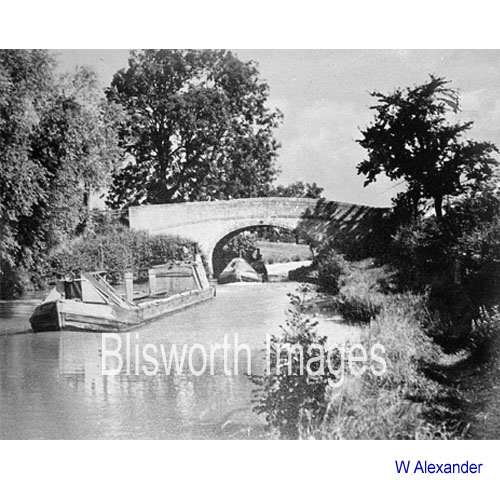 |
08-13 Two relatively modern pictures by Walter Alexander, date c. 1950 - 60. Candle Bridge at the lower end of Chapel Lane. | |
| 08-27a Candle Bridge around 1900. Before the crude brick-built Candle Cottage, known in the 1950s, was built there was a wooden shed. There is no record whether it was a dwelling house. | ||
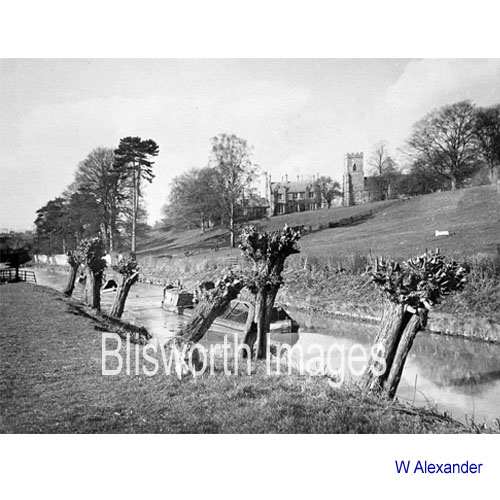 |
08-14 The bank beyond which
church and rectory rests is a natural shelf of ironstone rather than the
result of the canal construction. The canal in fact follows the
natural valley as far as possible in order to have as short as possible
a length of tunnel under Blisworth Hill.
The willow trees along this bank and those near to Candle Bridge were planted by Joseph Westley junior. |
|
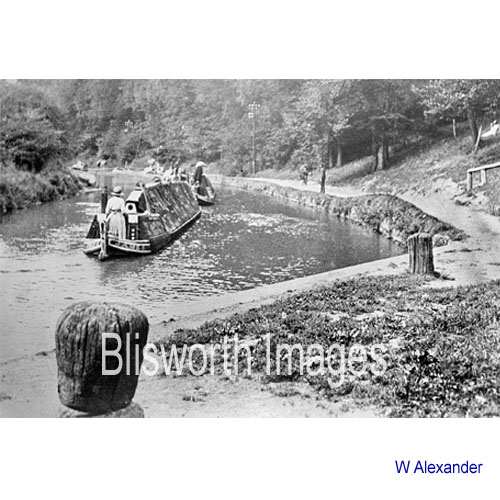 |
08-15 Judging from telephone poles and trees - dated c. 1930.
|
|
